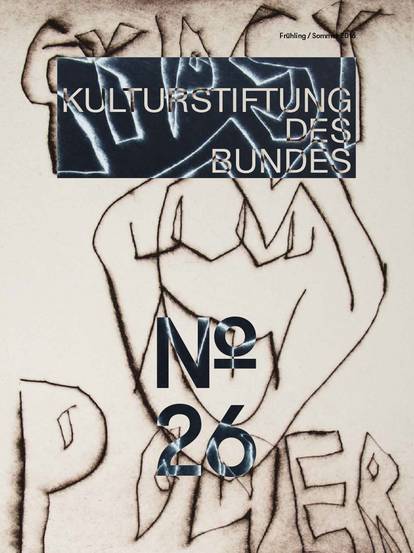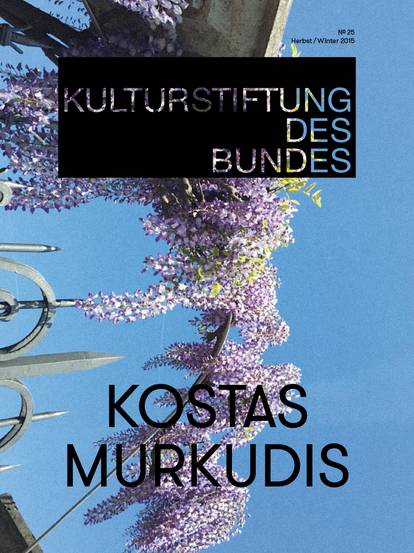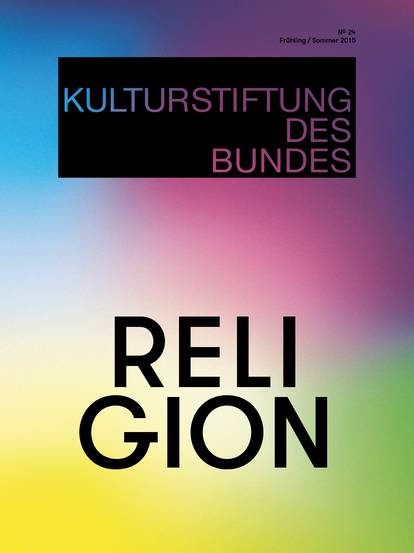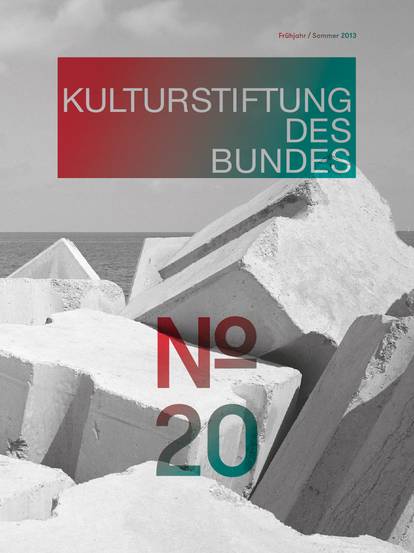Composers and musicians have attempted to express nature through music since the Baroque period. To what extent can music instil life in the acoustic realms of nature? In the following, musicologist Bernhard Schrammek speaks with chamber musician Jeremias Schwarzer and concert designer Folkert Uhde about worlds of harmony, musical petting zoos and the wild creativity of nature.
Bernhard Schrammek (BS): Mr. Schwarzer, Mr. Uhde, the notion of a harmonious world order is quite ancient. The Pythagoreans developed the model of the Harmony of the Spheres, on which the order of the heavenly bodies was based, construed as a harmony inaudible to the human ear. In the early sixth century, the scholar Boethius described the concept as “musica mundana” and also coined the term “musica humana” to describe the musical harmony in the human soul and body. The latter played a constitutive role during all of the Middle Ages and early modern times. It holds that nature – without any human interference – is based on harmonious-musical order. Is there any way we can still work with this musical term nowadays?
Folkert Uhde (FU): That is very far from how we view the world today, though I have always found the thought extremely interesting, especially in how musica mundana and musica humana relate to one another. I think the reason we find the concept of musica mundana so difficult to understand is because people hardly ever listen consciously nowadays. Of course, we constantly hear things via every conceivable form of media, but it’s a very passive process, because we block out the one thing that distinguishes listening from hearing. Most people aren’t even aware of what a sensational organ they possess: an acoustic radar which is constantly at work around the clock. The ear is the one human organ which has contributed most to ensuring human progress because it protects us the most from danger. Yet we no longer realise this due to the constant acoustic bombardment coming through earplugs.
Jeremias Schwarzer (JS): The basic principles of awareness are ancient human traits which are integrally linked with nature. We are all clearly part of nature; we act and react within the natural world. But we’ve forgotten that. It started a long time ago when Christian philosophers of the Middle Ages began viewing humans as detached from nature and evaluating them “objectively”. As nature became increasingly regarded as a “mechanism”, a notion took hold which consequently divided humans and nature. Newton reaffirmed this pattern of thought which runs through European intellectual history and which still strongly influences our views today: We are here, nature is there. And this separation from nature is ultimately the cause of most of our global problems. What would happen if we no longer viewed nature as a gigantic storehouse of raw materials, but instead viewed ourselves as part of nature? Our project can perhaps contribute just a little bit to increasing awareness, and so doing, reaffirm the close bond of humans to nature.
BS: In almost every epoch and culture, we find examples of artists imitating nature through music. Composers have always attempted to express more or less authentic sounds of nature and natural phenomena with the musical means of their times, whereby animal sounds were extremely popular. By the 16th century, if not earlier, “imitatio naturae” became an established practice in the musical field. Renaissance organs had a “bird call” register, Johann Caspar von Kerll produced a charming “Cuckoo Capriccio” for the cembalo, while Heinrich Ignaz Franz Biber presented an entire petting zoo in his “Sonata representative”. But also in the Baroque and Classical periods, we find a lot of “tonal painting”, such as Vivaldi’s “Tempesta di Mare” or Beethoven’s “Pastoral Symphony”. The 19th century opened an entirely new chapter with symphonic poems, but one can also hear thunder and sounds of nature in Wagner’s operas and Mahler’s symphonies. And composers have continued imitating nature in their works during the 20th and 21st century – perhaps the most prominent example is Olivier Messiaen, who reproduced birdcalls in many of his works. In view of this large historic perspective, we have to wonder what exactly composers find so appealing in imitations of nature.
FU: The first thing is that composers of every era have clearly been interested in looking back at the archaic beginnings of all music, which originated from the imitation of natural sounds. One theory on how music developed states that humans initially mimicked what they heard. We still possess this “primitive reflex”, obviously now enriched and influenced by the entire spectrum of musical traditions and styles.
JS: Reproducing sounds of nature is definitely appealing to composers. Imitations of nature can serve to demonstrate one’s compositional virtuosity and brilliance. I think Vivaldi also took great pleasure is “capturing” nature with art. But from personal experience, I know that “the reproduction of nature” can be a very tricky matter. For example, I once tried to draft a musical “protocol” of the subtle changes of raindrops. That was a good learning experience because the mixture of regularity and change, which nature produces in an endless stream, is almost impossible to convert into a system.
BS: Is it even possible to produce an exact replica of nature in music?
JS: I went to a lecture once in which the bird imitations in a work by Olivier Messiaen were compared with their respective original birdcalls. Despite the meticulous care Messiaen took in his transcriptions, they were a far cry from what the real birds sounded like. Preparing for Vivaldi’s flute concerto “Il Gardellino”, I listened to real Italian goldfinches on YouTube. There is no way to express such wild creativity in musical notation, and definitely not in a Baroque concerto. But that’s obviously not the central priority for the composer. What’s more important is the idea of an artistic modulation of the original natural sound.
BS: But then music could give listeners false impressions of nature. The call of the cuckoo in many Baroque compositions, for instance, certainly sounds different that the true cuckoo song in nature...
JS: On the other hand, birds in some areas learn to mimic the sounds of the civilised world. I’ve heard of a certain kind of starling in America which has incorporated a cell phone melody into their song.
BS: Could we interpret the musicians’ tendency to imitate nature as an attempt to establish some order in the otherwise disorderly world of nature? Antonio Vivaldi, for example, was able to imitate nature – be it the song of a goldfinch or a storm at sea – in his own designed and standardised system of a three-movement concerto.
FU: I believe it’s more of a reciprocal relationship between the musical piece and nature. On one hand, the composer takes inspiration from nature and organises it according to certain criteria of his own. On the other hand, the creativity of nature also serves the composer by bringing a bit of chaos into his self-determined order. Order only gets interesting when you start playing around with it or occasionally disrupt it. But if you’ve figured out the compositional principle after only a few bars, there’s no reason to listen to the rest of the piece.
BS: But there are many different degrees in which composers can lend space and order to nature in their work.
JS: That’s right, and I’d even go so far as to claim that a composer’s general attitude toward nature directly corresponds to that portrayed in the music. In my opinion, there are two fundamentally different approaches one can take. The first follows the motto: “Subdue and dominate the earth!” which is propagated by the demystified, industrialised world. The second is a much less active, rather attentive reference still cultivated by some indigenous cultures today, namely “You are guardians of the planet, you are responsible for the earth because you are a part of it!” Both attitudes naturally influence the way nature is portrayed in music.
Looking at compositions from various eras, one can clearly recognise how human beings –either the composer personally or the prevailing intellectual current in which he lived – wanted to see themselves relative to nature. For example, Joseph Haydn’s “The Creation” presents a faithful representation of nature in the sense of the Enlightenment which raised the human being to the pinnacle of God’s creation. The works of the romanticists, however, frequently emphasised the human being’s intimate relationship with nature. And then there are the heroic constructions like the “Alpine Symphony” by Richard Strauss, which superimposed a powerful “ego” onto nature and made it easy to instrumentalise for human self-aggrandisement.
BS: And how close was Vivaldi’s relationship to nature?
JS: I believe Vivaldi’s portrayals viewed the human as a participant of nature. After all, in Venice he practically lived “in the water” and also spent longer periods of time in the countryside. In this context, I find his music very physical and sensual.
FU: What’s more, in his imitations of animals and nature, Vivaldi was obviously touching on something obvious to people for existential reasons: When you walked through the woods, rode on horseback or took the coach, you had to distinguish whether the snapping twig in the underbrush came from a bear, a robber or a harmless little animal. This conscious awareness of nature, which we no longer comprehend, is embedded in his music.
BS: The concert project “sounds & clouds”, which you both developed together, focuses on this conscious awareness of nature. The project features four concerts by Antonio Vivaldi which contain descriptions of nature. These are supplemented by the musical piece “Singing Garden”, written by the Japanese composer Toshio Hosokawa in 2010, and the electronic sounds of the Italian artist Letizia Renzini, who created a sound installation from birdcalls. How did this unusual combination of works come about?
FU: Vivaldi arranged natural sounds, as I mentioned before, into a Baroque movement scheme, and we confront them with an environment – music by Hosokawa and electronic sounds by Letizia Renzini – that helps reawaken our senses. And we are also working with the spatial dimension. Neither the bird sounds nor the music come from only one direction. We try to sharpen the sense for the diversity of sounds.
JS: For each of the four Vivaldi concerts, we developed a basic mood which plays a central role for its interpretation. “La Notte“, for example, is not a portrayal of a peaceful night, but rather a musical description of a physical experience. At the very beginning, we hear the rhythm of a heartbeat and the gasping of breath. There are pauses which are peaceful, relaxed, but there are also pauses, during which you dare not breath. Essentially it’s a very “vegetative” piece. “Tempesta di Mare”, on the other hand, is a true musical theatre piece which thrives on a striking rhythm and an interesting repetitive structure in the musical pattern, comparable to the central perspective used in Baroque stage painting. These extremely clear characterisations of the Vivaldi concerts were important to Toshio Hosokawa for composing his own music. He always incorporates references to Vivaldi in his works. On one occasion it’s a small canon, on another a certain rhythm, in “Tempesta di Mare” a small bell which alludes to the wind ceremony in Japan. In this way, he creates an acoustic space which sounds very unconstrained, but is actually composed with incredible precision. I felt this when I was recently organising the Japanese premiere of the “Singing Garden in Venice” together with Japanese musicians who paid even closer attention to the composer’s performance notes than the European musicians did.
FU: The third aspect of the project is the electronic sounds by Letizia Renzini who works with sampling technology. She forms a new structure, using sound recordings of Tuscan birdcalls. Vivaldi basically did the same in his times. He took a “sample” of a goldfinch and modified it into a continuous structure which corresponded to the rules of the early 18th century.
BS: It goes without saying that one must come up with an adequate form for such a unique concert programme. The traditional stage-audience situation, which dates back to the 19th century, is incapable of producing the desired effect…
JS: We as musicians are in the centre of the action anyway. But we ask ourselves what we can do to immediately draw the audience into our midst so that there’s no difference between the musicians, music and the audience. And you can do that through remarkably simple means. The audience will sit among the musicians in a garden installation comprised of turf, plants and other garden elements.
BS: But isn’t that just an illusion?
FU: Of course, it’s an illusion. Obviously we’re not really sitting in nature, we’re at a concert. But its main purpose is to open one’s senses and awareness for the musical depths in Vivaldi’s and Hosokawa’s works. We put the audience directly among the musicians so they can experience the spatial structures of the music. In this way, we can show the listeners that they are capable of listening three-dimensionally. I’ve worked in numerous projects where I experienced how surprised people are, how they listen especially attentively the moment someone plays an instrument from behind them or beside them. For “normal” concert-goers who are used to sitting away from the stage in fixed rows of seats, this close proximity to the musicians – the sound creators – is an enormous physical experience which leads to a deeper awareness of the music.
JS: We always notice how hungry the audience is to participate in concerts. However, we have to be very careful and not demand too much from them. The listeners will move to a point where they would like to take the next step but never had the opportunity to do so, and if you can pick them up at that point, it creates a kind of magical attention that everyone shares in.
FU: The sociologist Hartmut Rosa has described this experience as the “desire for resonance”. That’s exactly what we’re trying to satisfy with our concert projects. A good example of this is “joint breathing”. When musicians – be it violinists or hornists – perform together, they all breathe at noticeable moments. Sitting so close to the musicians, I’m positive the audience draws breath and holds it together with the musicians in time with the music. Being so physically close to a musician, you would have to be quite resistant not to synchronise your breathing to theirs. In traditional stage concerts, however, you have an audience which usually does not relax and enjoy this aesthetic experience. Only seldom do they participate so intensively in what is happening on stage. I would wish that people don’t leave the concert saying “That was nice...”, but rather share in an experience which was only possible because they attended that particular concert.
BS: Can such a concert experience change one’s relationship to nature?
FU: Why not? A concert like that has the potential to create a positive movement of resonance within a community. It can be an incredibly intense experience which can also influence my life “outdoors”.
JS: I leave the concert and notice that I actively employed my sense of awareness. My awareness is precious and I had participated actively in what happened. The world, as you know it and have repeatedly experienced it, won’t change because of it, but maybe for a little while you’ll find yourself in a “different”, more consciously perceived world, with which people interact differently. In any case, you have come in intensive contact with music and nature at both an emotional and intellectual level.
BS: Does this mean that we’ve come one step closer to achieving harmony of the world and the human soul, which you mentioned earlier?
JS: Possibly. For my part, I find that Toshio Hosokawa’s music possesses this dimension, as it explicitly emphasises the harmony of silence. The precision of his works reminds me of a Zen garden, like the one on display in the “Gardens of World” in Berlin-Marzahn. Everything in there is precisely planned and arranged. It’s not an end in itself, but rather it enables visitors to perceive and take joy in the slightest movements and changes – like the flight of a bumblebee. You might not have seen the bumblebee if the garden hadn’t been designed in a way that permitted a sharpened awareness of the beauty and vitality of nature.
FU: That’s a very beautiful image for our work. Our aim is to create a fitting and well-planned contextualisation around the music so that one can truly recognise its quintessence.

![[Translate to English:] Magazine 38](/fileadmin/_processed_/f/1/csm_Magazin38_Cover-Vorschau_921x1230_689f428dc3.jpg)
![[Translate to English:] Magazine 37](/fileadmin/_processed_/b/c/csm_Mag37_Cover-Vorschau_921x1230_b5129fdb2a.jpg)
![[Translate to English:] Magazine 36](/fileadmin/_processed_/2/a/csm_Cover_Magazin36__issuu_2f3cef97bb.jpg)





![[Translate to English:] Magazine 30](/fileadmin/_processed_/c/b/csm_magazin30_vorschau_9005f773d3.jpg)














